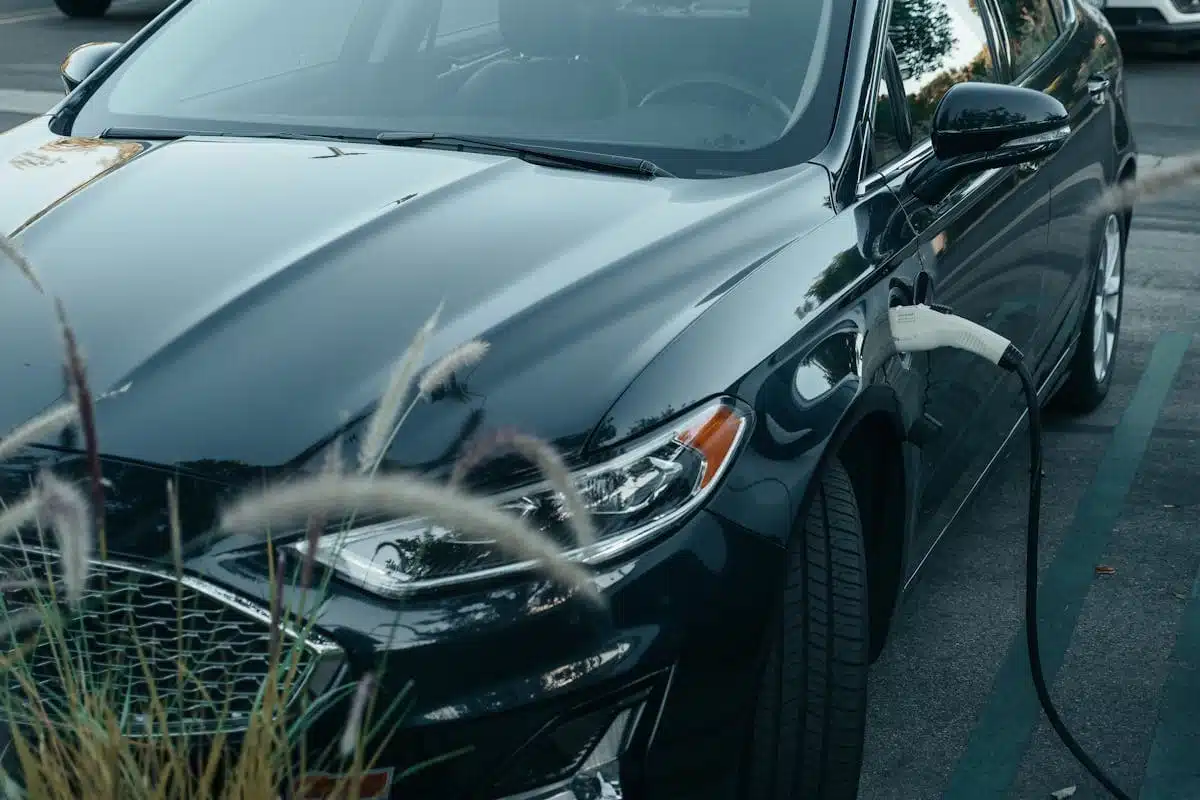EV Incentives Through the Electric Vehicle Tax Credit
Saving money brings joy to most everyone’s heart, especially in today’s economy. If your next vehicle purchase happens to be electric, you’re in luck—the federal government wants to reward you with cold, hard cash. The electric vehicle (EV) tax credit offers $7,500 back in your pocket for buying certain EVs.
Whether splurging on a Tesla or going economical with a Nissan Leaf, taxpayers can capitalize on sizable savings. We promise this guide will explain everything you need to know to qualify for the credit and claim your rightful EV stimulus.
From updated income caps to manufacturing rules, you’ll learn insider tips to unlock the full $7,500 credit. With complete clarity on newly expanded guidelines for 2024, you can cruise into the dealership armed with knowledge on how to score the maximum discount. Strap into your budget-stretching boots—you’re about to take a smooth ride down EV tax credit lane.
What is the EV tax credit?
The electric vehicle (or “EV”) tax credit is like winning a scratch-off prize on that odd-looking green car you’ve been eyeing. It’s basically free money that Uncle Sam is handing out to help sweeten the deal on a new electric or plug-in hybrid vehicle.
Essentially, the EV tax credit knocks up to $7,500 off your 2024 tax bill when you go electric instead of gas. Cha-ching! Plus, you now have the choice to take the winnings immediately if you’d prefer by transferring that sweet cashola to your car dealer for a discount right when you’re signing the papers.
Not only do you get to drive away with a shiny new EV, but you also get rewarded by the taxman for going green in the process. Frankly, it’s a win-win for planet Earth and your wallet, too! Pretty sweet deal if you can get it! But make sure you jump through the right qualifying hoops first before you claim the prize money!
Qualifying for the 2024 EV tax credit
A. Income requirements
You gotta make below certain income limits to qualify for the big EV tax credit payout. We get it, the taxman wants this to help regular folks afford an electric car, not line the pockets of high rollers. Here’s what your adjusted gross income (AGI) needs to be for 2024:
- Single or Married Filing Separately: $150,000 or less
- Head of Household: $225,000 or less
Married Filing Jointly: $300,000 or less
Luckily, Uncle Sam lets you use either your income from 2024 OR 2023, whichever helps you out more. Cha-ching! So if you got a big promotion with a pay bump, you still might squeak by and remain eligible for the full tax incentive.
B. Vehicle price caps
Your brand electric vehicle ride can’t be too flashy or expensive either to get the tax credit. Here’s what the MSRP limits are for qualifying vehicles:
Cars/Sedans: $55,000 or under SUVs/Trucks/Vans: $80,000 or under Used EVs: $25,000 or under
MSRP stands for “manufacturer’s suggested retail price”. That’s dealership lingo for the sticker price before extras like taxes and fees. Make sure you crunch the numbers with options and accessories added too, since those count!

C. Manufacturing guidelines
Finally, that sweet new EV needs to meet some battery sourcing and assembly rules. We’ll break that down more later, but generally, a good chunk of that battery needs to be made and mined in North America. Plus, final assembly of the full car itself also needs to happen locally.
The tricky part is the required percentages go up little by little from 2023-2032. So an EV might qualify one year but not the next if the manufacturer doesn’t ramp up stateside parts and construction to meet the clean vehicle credit requirements. We’ll highlight which rides are golden in 2024 a bit later. Just know Uncle Sam is trying to create jobs at home, so he insists your new car supports some domestic green economy groundwork first before he pays up!
Which electric vehicles qualify for the federal EV tax credit?
Now for the fun part – which sweet new electric vehicle rides can score you some money back from Uncle Sam in 2024? Remember, they gotta meet all those income limits, pricing maximums, and manufacturing requirements we just went over to qualify.
Luckily in 2024, besides some snazzy Teslas and domestic classics like the Chevy Bolt, you’ve now got some fresh blood options from brands going green for the first time ever, expanding the eligible vehicle market. We’re talking electric versions of popular gas guzzlers like the Ford F-150, Jeep Wrangler 4xe, and even luxury players like Audi and Lincoln. Plus some all-new EV-only debutantes from newbie startups like Rivian.
Based on the latest IRS guidance, here’s a snapshot of some 2024 full or partial qualifiers that have moved their manufacturing enough stateside to join the EV tax credit party:
- Acura ZDX
- Audi Q5 PHEV
- Cadillac LYRIQ
- Chevrolet Bolt (some models), Blazer, Equinox
- Chrysler Pacifica PHEV
- Ford Escape, F-150 Lightning
- Honda Prologue
- Jeep Grand Cherokee & Wrangler PHEV
- Lincoln Corsair Grand Touring
- Nissan Leaf (some models)
- Rivian R1S, R1T trucks
- Tesla Model 3, Model X, Model Y
Volkswagen ID.4
We always suggest double-checking with your specific dealer on the exact trim packages and model years offered that qualify. As we said, manufacturing percentages rise annually, so an automaker might still be playing catch-up ramping up US parts sourcing and assembly. The wrong package could make an EV ineligible for credits even if the brand offers qualifying versions. Consider all the fine print before signing to be sure!
How the vehicle tax credit is calculated?
Alright, time for some math! Calculating what you can actually pocket from the EV tax credit isn’t too tricky though. There’s two basic requirements that make up the total possible $7,500 amount:
A. Battery requirement
The first potential $3,750 chunk comes from having a decent percentage of that EV battery of yours being assembled or manufactured in North America. Those percentages start at 50% in 2023 and phase up gradually each year until hitting 100% in 2032.
In 2024, you need 60% of your battery parts sourced and put together across the border for the maximum half. If your ride only meets that threshold halfway with 30% domestic battery content, you may be eligible for $1,875 instead.
B. Critical minerals requirement
The other half of the total, another $3,750, depends on if a good portion of metals and materials in the battery came from US mines or countries we have trade deals with. We’re talking about rare resources like lithium, cobalt, and manganese.
For this piece, 2024 models need 50% of battery components originating from US trade partners. Hit that mark or better and you check off the second box for the full $7,500 tax credit potential! Fall short on sourcing friendly places, and you’d get $1,875 as a partial qualifying amount.
Add up your battery assembly points and mining origin scores, and there’s your maximum EV tax credit reward waiting! Pretty straightforward, right?
Claiming the electric vehicle tax credit
A. Option 1: Claiming on your taxes
This one is old school but simple. When tax season rolls around, you fill out IRS Form 8936 to claim the credit when you file your federal tax return. Just tally up how much Uncle Sam owes you based on what EV tax credit rewards your vehicle qualified for.
Since the tax credit is non-refundable, it can erase up to $7,500 of your total tax liability, but you won’t get any leftover amount refunded to you if it zeroes out what you owe. No rollovers either – gotta use it for that tax year purchase or lose it!
The one catch is you typically need to claim the year the EV was delivered, not necessarily purchased. So if you bought in 2023 but took delivery in 2024, file with your 2024 return, not the prior year.
B. Option 2: Transferring the credit to the dealer
This hot new way for 2024 lets you score an instant discount on your EV right when you buy it. Just let your dealer know you want to transfer over the EV tax credit amount instead of waiting to claim it later.
As long as you fall under the income caps and commit to reporting the sale on your next tax return, the dealership will deduct the full credit you pre-qualified for off the purchase price. Talk about immediate gratification!
You still have to officially account for the transaction when you file taxes the following year on Form 8936. But meanwhile, you get to drive home your new electric vehicle the day you buy it at a stellar discounted price! The only catch is that if your financials end up disqualifying you somehow down the road, you gotta pay back the rebate difference later.
Required Information for claiming the clean vehicle tax credit

Before you vroom off the dealership lot with your new electric vehicle, make sure you get all the right paperwork to back up your EV tax credit later!
If claiming on your taxes, the seller legally has to furnish you an official report on the vehicle sale, including:
- Seller & buyer ID numbers
- Date of sale and sales price details
- Confirmation of maximum tax credit amount
- VIN of vehicle
- Battery capacity specs
- Verification you’re the original owner
- Signed seller penalty of perjury statement
If you opt for the instant rebate at the dealer instead, have the following personal details ready to provide:
- Taxpayer ID number (usually Social Security #)
- Valid photo ID
- Modified adjusted gross income amount + tax return filing confirmation
- Statement you’ll use the vehicle for personal reasons primarily
- Written election document to transfer the tax credit officially
As long as you’ve got the proper paperwork trail, it’ll be smooth sailing to score your rightfully earned EV tax credit loot!
Additional EV rebates and incentives
While the federal tax credit should bring some nice savings on its own, don’t forget about stacking other green vehicle perks on top! Lots of states and even utilities now offer EV rebates, tax exemptions, discounted charging rates, HOV lane access, and additional incentives for going electric.
In EV-loving California for example, you can score a $2,000 clean vehicle rebate from the state on top of the federal $7,500 EV tax credit. Some areas even let you charge for free at public stations! Just make sure you read the fine print so you don’t accidentally “double-dip” on any conflicting offers.
The bottom line is ditching gas for electric is getting some serious subsidies these days across the country. Take advantage of all the rewards you can combine! Just be transparent in your applications and confirm the credits and perks actually stack before claiming. More money back through multiple incentives? We’ll cheer to that!
Leasing and the EV tax credit
What if you’d rather lease than buy? Unfortunately, you can’t directly claim the federal EV tax credit as an individual lessee. Bummer!
But don’t fret too much! Car dealers and leasing agencies can usually qualify for a commercial tax credit instead by offering electric vehicles in their rental fleets and inventory.
The hope is that some of those business EV tax credit savings might get indirectly passed down to you through lower lease payments. Just don’t count on it too much since dealers aren’t required to discount your lease rate if they capture that commercial tax break.
Moral of the story – leasing an EV likely won’t score you bonuses directly, but you might benefit from behind-the-scenes dealer incentives. Either way, you’ll still get to drive that sweet electric ride. So negotiate the best possible rate you can, and enjoy the green vehicle perks however they shake out!
Unlocking electric savings today for a greener tomorrow
The revamped federal EV tax credit for 2024 opens up electric vehicle savings to more shoppers than ever before. With increased income caps, manufacturing refinements to qualify more models, and even instant redemption options, Uncle Sam is rolling out the green carpet for US car buyers.
Just make sure you assess eligibility requirements, vehicle offerings, credit calculations, paperwork needs, and incentive stacking opportunities before you ride off into the electric sunset. Optimizing all the puzzle pieces takes some diligence, but the payoff through thousands back in bonuses makes it so worthwhile!
Here’s to affordable, eco-friendly rides and fatter bank accounts for EV early adopters. Let’s collectively ditch gas-guzzling traditions and ride smoothly towards a greener, cleaner future instead! Contact your tax professional at H&S Accounting & Tax Services for personalized guidance tapping everything electrifying wheels have to offer today!





